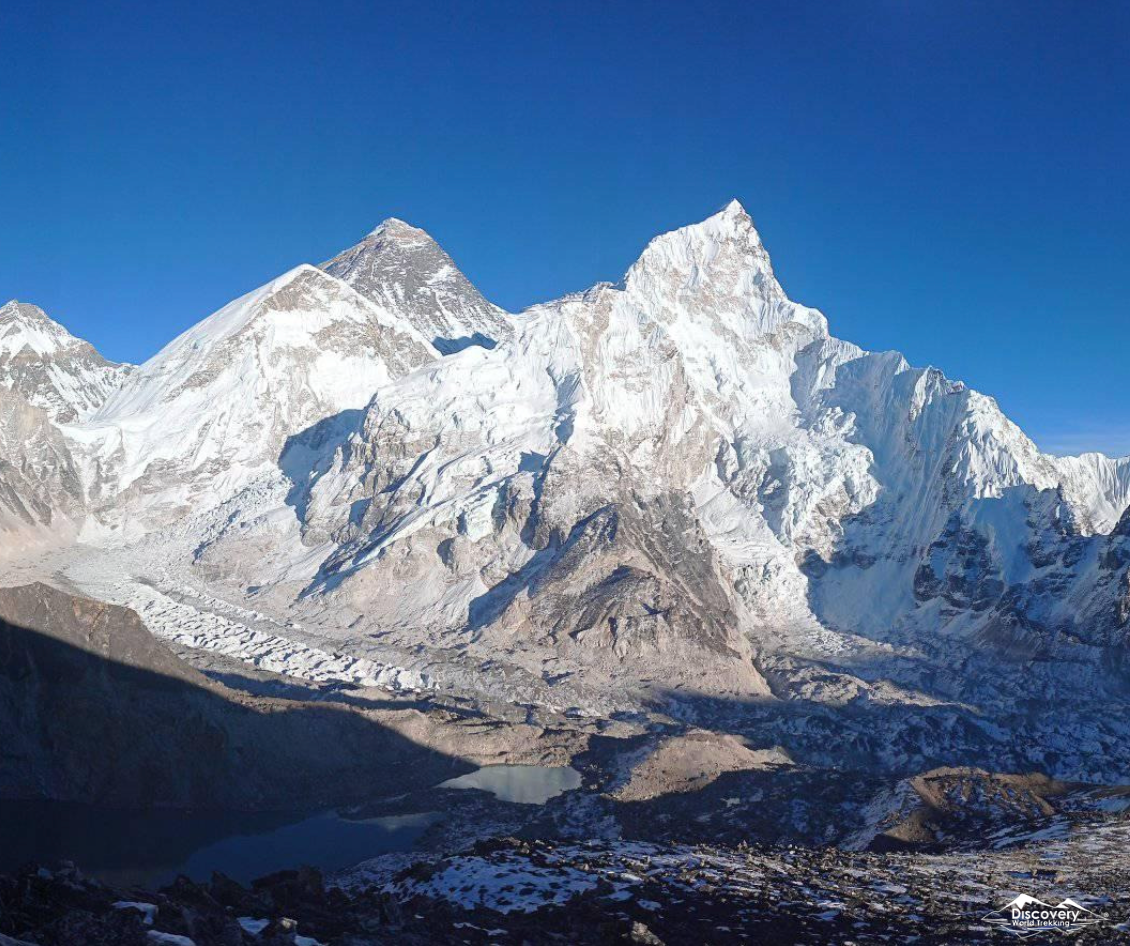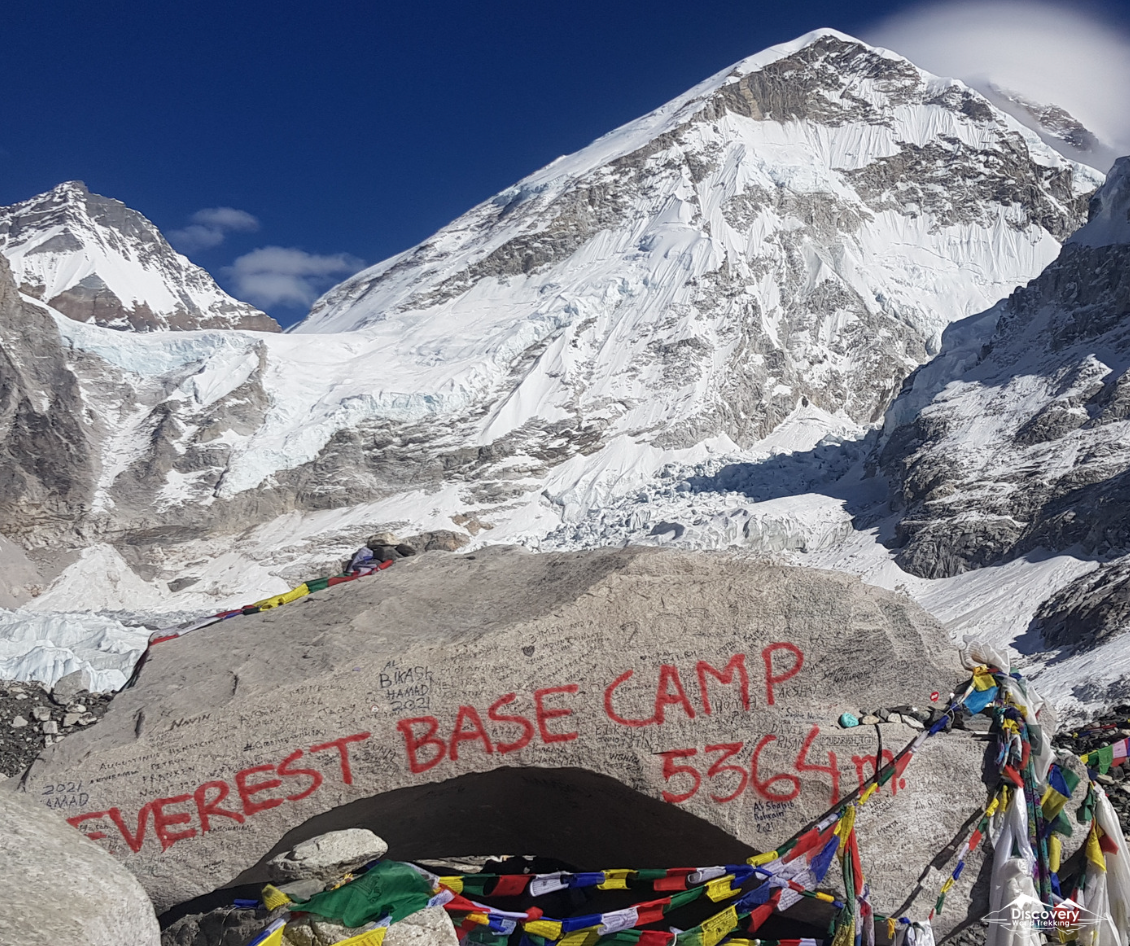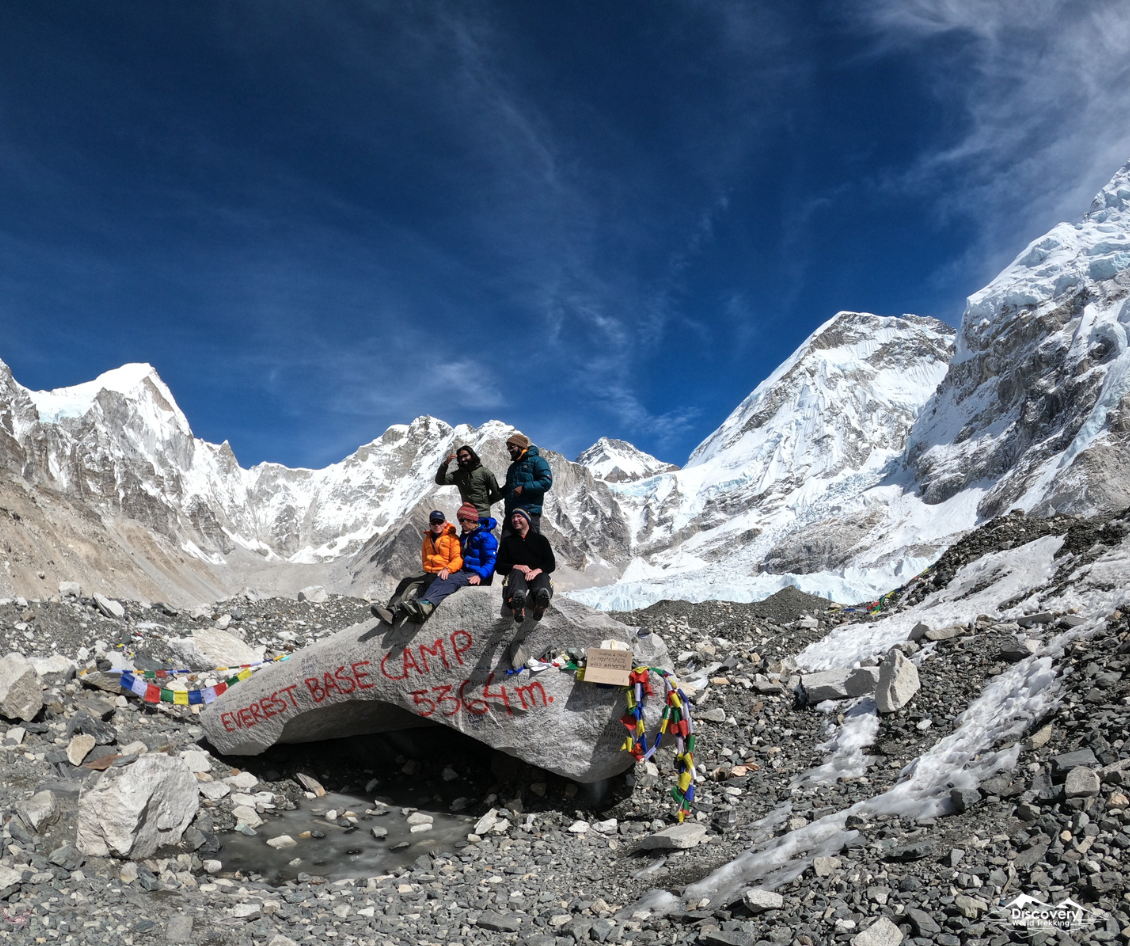Is global warming forcing the relocation of Everest Base Camp?
Recently BBC published an article "Nepal to move Everest base camp from melting glacier." In this article, BBC states that due to global warming and other human activities, the current Everest Base Camp is becoming unsafe.
As a trek and tour operator with over a decade of experience taking trekkers to the Everest Base Camp, Discovery World Trekking, has first-hand experience observing the changes in the Everest Base Camp and the trek routes during these years. Hence, we feel qualified to raise our voice on this topic.
How has Everest Base Camp aged?
Current Everest Base Camp lies by the side of the Khumbu Glacier. It was established in 1953 by those who first summited Mount Everest following the steps of Tenzing Norgay Sherpa and Edmund Hillary. They actually set up a temporary home at EBC for their Everest expedition.
EBC has undergone a huge change since 1953. A study published in the Journal Nature in 2022 states that the South Col Glacier, Everest's highest glacier, has lost 2,000 years' worth of ice in 30 years. It indicates that the situation is quite serious.

Scientists point out that like other glaciers in the Himalayas, Khumbu Glacier is thinning by as much as 1m in the Everest Base Camp vicinity. It is disturbing because ice melting in the Khumbu Glacier is destabilizing Everest Base Camp as it results in rock movements and the creation of water bodies in the vicinity of Everest Base Camp.
In fact, some trekkers complain of seeing crevasses open overnight at the camping sites. In addition, you will now hear sounds of rock falling due to the ice melting.
However, it is just not global warming. Recent estimates show that as much as 4,000 liters of urine are disposed of at Everest Base Camp. In addition, the mountaineers staying in the Everest Base Camp burn substantial amounts of fuel, including kerosene and cooking gas. The warm bodies, fuel combustion, and human excrement act as agents for climatic changes.
This activity also impacts the Everest Base Camp. In fact, due to the environmental changes, the historic Everest Base Camp may no longer look the same.
Nepal Government's Response
Everest Base Camp (EBC) directly contributes to the national income of Nepal. Hence, Nepali authorities are paying attention to the changes developing at EBC.
Taranath Adhikari, director general of Nepal's tourism department, admits that they are preparing for the relocation. They are looking for options to relocate EBC 200 to 400m down from the current one.
Though the relocation to safer grounds is welcome when you shift EBC to a lower altitude, the distance to the top of Everest peak increases, making summiting more difficult.
Nepali authorities have indicated that the Everest Base Camp shift may take place by 2024. However, there is broad consensus that the present base camp can safely serve for three to four more years.
But still, the research for the EBC shift has not concluded, and we expect it to take at least two or three more years to come to a conclusion.

How you can help?
As far as global warming is concerned, it requires global commitment to decrease carbon emissions. However, as responsible global citizens, there are ways we can follow to protect Everest Base Camp, here are several ways you can save EBC from the adverse effects of tourism. Please remember that to save EBC, you should also pay attention to the Everest region as everything in nature is interconnected.
1. Leave no trash.
This is the most obvious rule everyone needs to follow. When you are at the Everest Base Camp, on the trails to EBC, or any other trek, ensure that you do not leave anything behind. If you have trash, you should carry the trash and dispose of it properly at the right place. If everyone follows this well-known rule, then we can protect EBC effectively.
2. Bring only the essentials to the trek.
It is a great idea to trek light. If you take much more than you need, this will generate more trash. Moreover, most things you consume will leave a carbon footprint. So, learn to trek with light luggage.
3. Take nothing from the trek area.
While reaching EBC or returning from EBC, you should not be taking anything from nature. Not a single flower, leaf, or even a rock. Each item in the ecosystem has a role to play, and you should not be disturbing the ecosystem.
4. Take less crowded paths.
When you trek on a crowded path, you will consume more resources from that area, such as firewood for fuel, water, and plastic, glass, or tins that keep the food. So, consider taking alternate paths, which will spread out the effects to a larger area. We advise you to consider the Three High Passes trek or EBC with Gokyo Lakes instead of the classic Everest Base Camp trek.
Conclusion:
Global warming is certainly affecting the overall environment of the earth. Glaciers are shrinking, ice on high mountains, rivers, and lakes is breaking up, and trees are flowering sooner. Everest Base Camp is already showing signs of being affected by global warming.
So, for temporary adjustment, we might need to shift Everest Base Camp to a safer place. However, in the long term, the world must come to one place, and fight global warming aggressively. As responsible global citizens, everyone must contribute.
